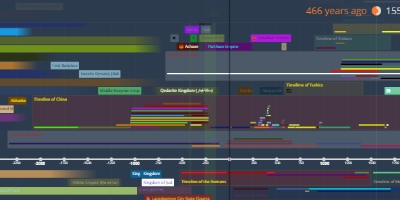State of the Teutonic Order (Staat des Deutschen Ordens) (jan 1, 1226 – jan 1, 1525)
Description:
The State of the Teutonic Order (German: Staat des Deutschen Ordens; Latin: Civitas Ordinis Theutonici), also called Deutschordensstaat (German: [ˈdɔʏtʃʔɔʁdn̩sˌʃtaːt]) or Ordensstaat ([ˈɔʁdn̩sˌʃtaːt]) was a medieval crusader state, located in Central Europe along the southeastern shore of the Baltic Sea. It was formed by the knights of the Teutonic Order during the 13th century Northern Crusades in the region of Prussia, and was disestablished in 1525. At its greatest territorial extent, in the early 15th century, it encompassed Chełmno Land, Courland, Gotland, Livonia, Neumark, Pomerelia (Gdańsk Pomerania), Prussia and Samogitia, i.e. territories nowadays located in Estonia, Latvia, Lithuania, Germany, Poland, Russia and Sweden.Established in Prussia and the previously (and presently) Polish Chełmno Land in the 13th century, the state expanded mostly as a result of the 13th-century Prussian Crusade against the pagan Baltic Prussians and the 14th-century invasions of neighboring Christian countries of Poland and Lithuania. The conquests were followed by German and Polish colonization. In addition, the Livonian Brothers of the Sword controlling Terra Mariana were incorporated into the Teutonic Order as its autonomous branch Livonian Order in 1237. In 1346, the Duchy of Estonia was sold by the King of Denmark for 19,000 Cologne marks to the Teutonic Order. The shift of sovereignty from Denmark to the Teutonic Order took place on 1 November 1346. At the turn of the 14th and 15th centuries, the Teutonic Order temporarily acquired the territories of Gotland and Neumark, which, however, it sold in the following decades. Throughout its history, the Teutonic state waged numerous wars with Poland and Lithuania, encouraging both countries to form a close alliance and personal union, which eventually led to the creation of the Polish–Lithuanian Commonwealth in the 16th century.
Following its defeat in the Battle of Grunwald in 1410 the Teutonic Order fell into decline, the region of Samogitia was restored to Lithuania, and its Livonian branch joined the Livonian Confederation established in 1422–1435. The Teutonic held lands in Prussia and Pomerania were split in two after the Peace of Thorn in 1466. The western part, with the previously Polish regions of Chełmno Land and Gdańsk Pomerania, was integrated with the Kingdom of Poland as the province of Royal Prussia, the eastern part remained under Teutonic rule, as a fief, also considered an integral part of the Kingdom of Poland. The monastic state was secularized in 1525 during the Protestant Reformation as the Duchy of Prussia, a Polish fief governed by the House of Hohenzollern. The Livonian branch continued as part of the Livonian Confederation until its dissolution in 1561.
Added to timeline:
Date:
jan 1, 1226
jan 1, 1525
~ 299 years
